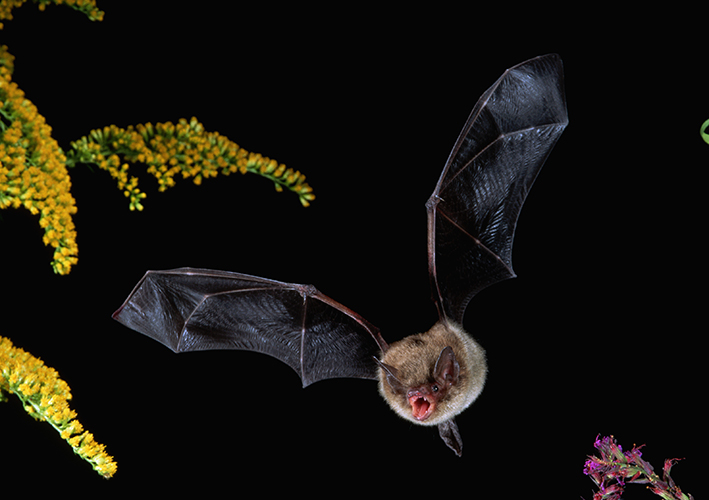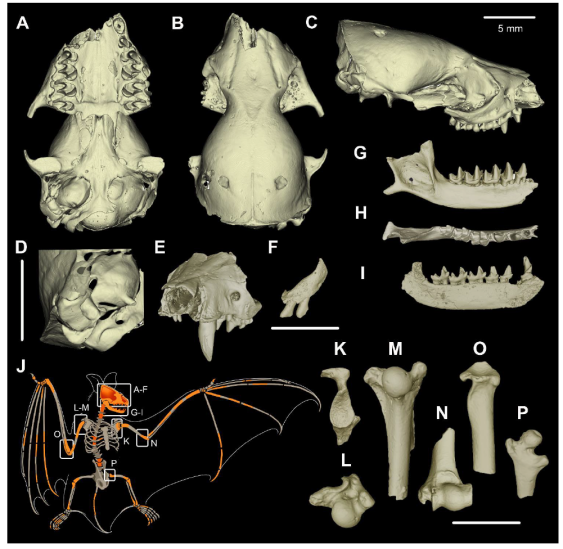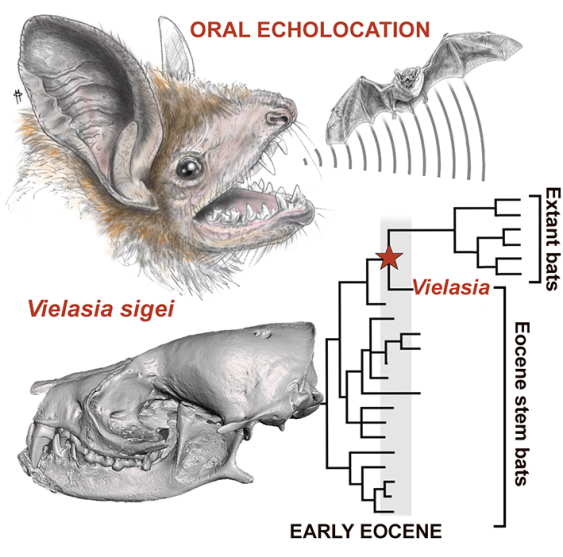Holy bat skull! Fossil adds vital piece to bat evolution puzzle
Bats may have lived in caves and used soundwaves to navigate much earlier than first thought.
Bats may have lived in caves and used soundwaves to navigate much earlier than first thought.

Of all the mammals, bats have one of the poorest fossil records, with palaeontologists estimating that about is missing.
This has made it difficult to pinpoint exactly when they first began to fly, or began roosting in caves, or developed their unique way of ãseeingã their surroundings in the dark using sound ã called echolocation.
But a near-perfectly preserved batãs skull discovered by French palaeontologists in aô cave that dates back about 50 million years has shed new light on what we thought we knew about this ancient, hypothetical creature.
Emeritus Professor Sue Hand from ôÕÑ¿èÓmadou Sydneyãs School of Biological Earth and Environmental Sciences is a leading palaeontologist with expertise in bat evolution. She led an analysis of the skull, published today in the journal , that involved Dr Jacob Maugoust and Professor Maeva Orliac from University of Montpellier in France, and Professor Robin Beck from the University of Salford, UK.
Prof. Hand says prior to the discovery of this skull ã which was among 23 separate fossilised individuals found in the cave belonging to the extinct species Vielasia sigei ã only fragments or completely flattened skeletons of early bats had existed in the fossil record.
ãWe donãt know very much about the beginnings of bats because we donãt have the missing links like we do, say, between dinosaurs and modern birds,ã she says.
ãThe oldest bat fossil is about 57 million years old, and it's a single tooth from a site in Portugal ã that's all we know about it. The first bats are all just known from fragmentary fossils, mostly teeth. When bats appear in the fossil record a little later, about 52 million years ago, some are wonderfully complete bats, but theyãre flattened.ã
While these flattened specimens are, in Prof. Handãs words, ãbeautifully preservedã, the fact that theyãve been flattened by layers of rock deposited over millions of years makes it difficult to decide with conviction, the exact positioning of bones in their three-dimensional anatomy. And when it comes to determining whether a fossil is from a species of bat that is already using echolocation, detailed and precise anatomy of the skull is crucial.
ãIn modern bats, between the voice box and the ear, there are some bones called the hyoid bones. In all modern bats that echolocate, one of these bones directly contacts the middle ear bones and appears to be involved in transmitting high frequency sound.
ãBut in the flattened fossils, while we can see these various bones, there is a question about their precise relationships to each other. This has led to a lot of debate among scientists about whether or not a species used echolocation.ã

A table showing the various scanned bones against their place in the bat skeleton. Image: Hand, Maugoust, Beck & Orliac
But in the case of Vielasia sigei, not only is the skull almost entirely intact, but it has been preserved in limestone in its original three-dimensional shape which the scientists describe as ãuncrushedã.
ãIn this particular bat, we can see more directly what's going on deeper, in the inner ear,ã Prof. Hand says.
ãWe took fine measurements of that inner ear bone and compared it with that in the bats that do echolocate today and bats that donãt, and it sits in the middle of the ones that echolocate.ã
Not all bats echolocate, Prof. Hand explains. Flying foxes regularly seen in the Sydney night sky around the Botanical Gardens, Centennial Park and the Royal National Park rely on their very good eyesight to navigate and find fruit, without echolocation. Meanwhile, Sydney microbats such as the Eastern Bentwing Bat, Gouldãs Wattled Bat and the Chocolate Wattled Bat, are well known for navigating and catching insects using feedback from the high frequency sound they emit.
While Prof. Hand stops short of concluding that Vielasia sigei used echolocation with 100 per cent certainty, she says the new evidence is compelling.
ãItãs very convincing that the type of echolocation some of these early bats used was indistinguishable from what many echolocating bats use today, and at 50 million years ago, this is well ahead of whales developing this ability.
ãPrior to this find, we were only really certain that echolocation developed in the modern families of bats.ã

The Vielasia bat was closely related to a common ancestor of extant - or modern bats. The Eocene stem bats are now all extinct. Image: Maeva Orliac
In all, there were 400 fossil bones and teeth discovered by the French team in the cave in south-western France, which represented 23 individuals. Vielasia ã which is not a direct ancestor of todayãs bats but may have been closely related to it ã was only a small bat, with the uncrushed skull measuring only 1.8 cm long.
ãThere were 23 of these wonderful little bats living in a cave, which also makes it the oldest cave-dwelling bat in the world that we know of,ã says Prof. Hand.
ãWe didn't think that these early bats actually lived in caves. The information had been that they lived in trees around lakes and in forests which stretched right up to both poles because the Earth was very warm at this time.ã
But when these greenhouse conditions started to deteriorate later in the early Eocene period ã around 50 million years ago and about the same time that this bat was living ã there were much more wildly fluctuating changes in temperature.
ãSo it could be that this bat lived in a cave because this is much more stable environment.ã
Whether or not the analysis of the uncrushed Vielasia skull has settled the echolocation debate about early bats, Prof. Hand hopes that it will inspire further exploration of the fossil record. ô
ãWe think some of the characteristics of this bat would have also characterised the last common ancestor for modern bats. So it's exciting, and it is actually going to be an important specimen that people will get a lot of information from and use in their own analyses.ã